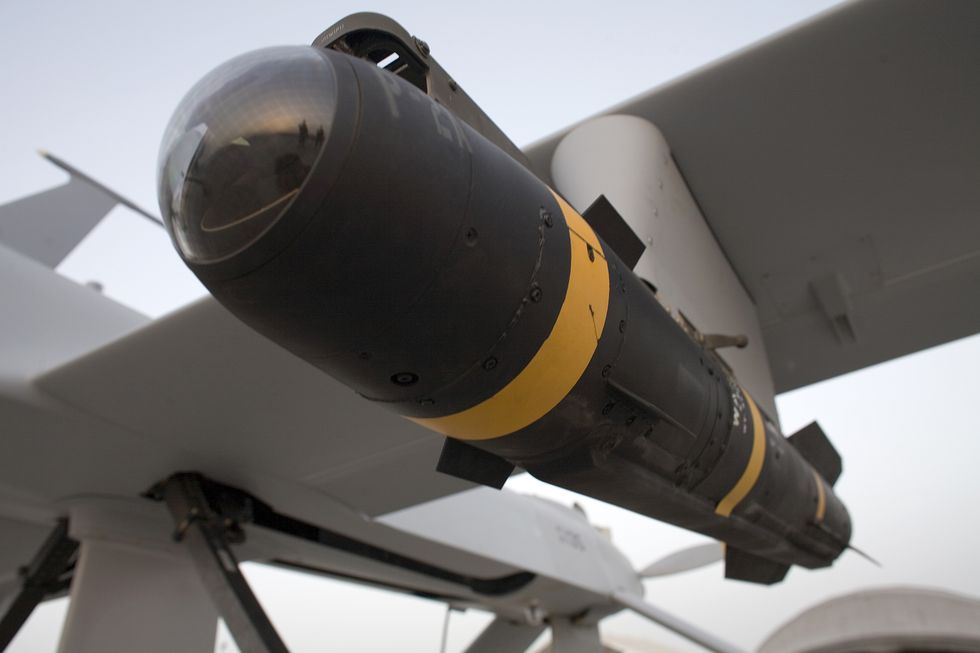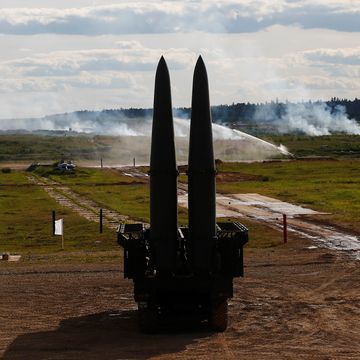- The Hellfire R9X missile is a modified Hellfire anti-tank missile.
- In order to reduce the chances of civilian casualties, it trades an explosive warhead for steel blades.
- The weapon is used by the CIA in targeted assassinations and was apparently used this past weekend in Syria.
A new unique new missile designed by the CIA in targeted killings was reportedly used again, this time in Syria. The Hellfire R9X, also known as the “Flying Ginsu” after the knives advertised in campy infomercials, kills its enemies by flying directly at them, popping out several steel blades at the last moment to slice its targets into bits. The missile is used by the Central Intelligence Agency to target specific individuals without risk to nearby civilians and other noncombatants.
The strike took place in Syria, against a minivan traveling between the towns of Azzaz and Afrin. The strike reportedly killed an Al Qaeda leader and two passengers, with a third passenger badly wounded. U.S. Forces have been working to eliminate Al Qaeda and Islamic State forces in the region but have been stymied by recent redeployments of U.S. troops ordered by President Donald Trump. The strike was reportedly the second in a week.
The missile used in the attack is known as the Hellfire R9X, known internally in the CIA as the “Flying Ginsu.” The Hellfire was originally designed as an anti-tank missile to destroy main battle tanks but became the weapon of choice for unmanned aerial vehicles like the Predator and Reaper drones. The Hellfire R, or Hellfire Romeo, is a semi-active laser homing missile, meaning it homes in on a pulse of laser light aimed at the target. The Hellfire R has a range of 4.3 miles, or 22,000 feet, meaning a Predator drone can launch the missile outside of hearing range, firing directly down on to a hostile target.
One problem with the Hellfire missile is the large, powerful blast created by the missile’s multi-purpose explosive warhead. That’s a feature in conventional warfare but a bug in low-level counterterrorism, where the warhead blast could injure or kill nearby civilians. In the U.S. Military, “danger close” for a Hellfire missile—that is, the closest a missile can be targeted near friendly forces—is 110 meters. Inside that, the threat of deaths or injuries to friendly forces is too great. This creates a danger zone centered around the missile’s impact point approximately 220 meters wide, a real problem for trying to prevent civilian casualties.
In May 2019, TheWall Street Journal revealed the Central Intelligence Agency had developed a new missile based on the Hellfire Romeo, Hellfire R9X. Hellfire R9X trades its explosive warhead for six spring-loaded steel blades. The blades pop out in all directions moments before impact. The kinetic energy of the 100 pound missile, combined with the six blades, is enough to kill anyone within range of blades. The missile likely has a 100 percent lethal danger zone of about 30 inches.
The Hellfire R9X has been used at least eight times. One target was Jamal al-Badawi, the accused mastermind of the bombing of the destroyer USS Cole in 2000. Another target was Al Qaeda leader Ahmad Hasan Abu Khayr al-Masri in Februrary 2017. Early uses of the missile before its existence was revealed confounded experts: the vehicles the targeted individuals sat in showed proof of being penetrated from above but without the explosion one would expect from a missile warhead or laser guided bomb.
It looks like the hellfire R9X remains a weapon of choice in Syria.
Source: The Drive

Kyle Mizokami is a writer on defense and security issues and has been at Popular Mechanics since 2015. If it involves explosions or projectiles, he's generally in favor of it. Kyle’s articles have appeared at The Daily Beast, U.S. Naval Institute News, The Diplomat, Foreign Policy, Combat Aircraft Monthly, VICE News, and others. He lives in San Francisco.














